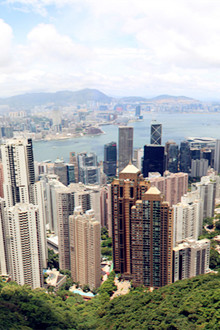Hong Kong ABCs (20): Physical features, flora and fauna
Writer:

Physical features
HONG KONG’S natural terrain is characterized by rugged uplands flanked by steep slopes. The highest point is Tai Mo Shan (957 meters above Principal Datum) in the central New Territories, and the lowest point (66 meters below Principal Datum) is in Lo Chau Mun (the Beaufort Channel) to the north of Po Toi Island.
The mountains are predominantly formed of volcanic rocks, whereas the lower hills and low-lying areas are generally underlain by granite or sedimentary rocks. Offshore, the seabed is covered with marine mud, with sand sheets occurring near the coast and in channels.
The oldest exposed rocks were deposited as river sediments about 400 million years ago.
Despite its small size, Hong Kong has a great variety of coastal landforms, including sea cliffs, sea caves, sea arches, geos, tombolos, wave-cut platforms, sea stacks, notches and blowholes.
Flora
Hong Kong is situated near the northern boundary of the distribution of tropical Southeast Asian flora, sharing similar species and structure with the flora of Guangdong. Despite its small size, Hong Kong has a rich flora with about 3,300 species of vascular plants, of which 2,100 are native to the territory.
Fauna
Terrestrial
The climate and physical environment provide a wide range of habitats and support for a rich and varied fauna that includes more than 530 species of birds, more than 50 species of mammals, over 100 species of amphibians and reptiles, 236 species of butterflies and 123 species of dragonflies.
Marine
Hong Kong’s subtropical marine environment supports species found in both tropical and temperate climates. Local waters contain a wide diversity of fish, crustaceans, mollusks and other marine life, of which at least 150 species are of fisheries significance. (SD-Agencies)











